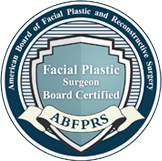
Because the eyelids are among the most delicate areas of the face, they often show signs of aging before other features. Blepharoplasty, or eyelid surgery, is one of the most effective procedures for restoring a bright, youthful expression. Yet the goals, techniques, and recovery experience can differ significantly depending on your age. At New York Cosmetic Facial Plastic Surgery, double board-certified facial plastic surgeon Dr. Matthew White customizes each eyelid procedure to the individual, ensuring refined, natural rejuvenation that enhances your facial harmony. Here’s how blepharoplasty differs for patients in their 30s versus their 60s.
Blepharoplasty in Your 30s: Early Prevention and Subtle Refinement
For patients in their 30s, eyelid surgery typically targets mild puffiness, hooding, or uneven folds caused by genetics or lifestyle factors such as sun exposure or lack of sleep. Dr. White uses the least invasive techniques possible to refresh the eyes while preserving their natural shape.
Common goals for patients in their 30s include:
- Reducing puffiness: Treating mild fat deposits that create under-eye bags.
- Enhancing definition: Refining eyelid contours for a more rested look.
- Tightening skin: Correcting minimal sagging without altering eye shape.
- Maintaining balance: Ensuring results blend seamlessly with youthful features.
Because younger patients usually have good skin elasticity and muscle tone, Dr. White can use smaller incisions and minimal tissue adjustment. Recovery is typically quick, with limited swelling or bruising, and most return to normal activities within a week.
Blepharoplasty in Your 60s: Restoring Structure and Definition
By the 60s, age-related changes like skin laxity, volume loss, and prominent fat pads often require a more comprehensive approach. Dr. White repositions or removes excess fat, trims loose skin, and strengthens the muscles to restore smooth, lifted contours and a natural, rejuvenated look.
For patients in their 60s, treatment often involves:
- Removing excess skin: Lifting drooping lids to open and brighten the eyes.
- Repositioning or reducing fat: Smoothing under-eye bags or bulging tissue.
- Supporting weakened muscles: Reinforcing eyelid structure for lasting lift.
- Refining contour: Creating balanced transitions between upper and lower lids.
Healing can take longer with age. Swelling and bruising may last up to two weeks, with final results developing gradually over several months. When performed by a facial specialist like Dr. White, the outcome remains long-lasting and naturally elegant.
Differences in Technique and Approach
While the foundation of blepharoplasty remains the same, Dr. White adjusts his approach based on several key factors:
- Skin Elasticity: Younger patients usually require minimal skin removal, while older patients benefit from more precise tightening to restore definition.
- Fat Management: In younger individuals, fat is typically repositioned to smooth contour irregularities. In older patients, excess fat is strategically reduced or moved to correct puffiness.
- Muscle Support: Because aging can weaken eyelid muscles, Dr. White reinforces these structures in older patients for lasting lift and support.
- Incision Placement: For younger patients, incisions are small and discreetly hidden within natural creases. Older patients often benefit from slightly longer incisions that allow optimal contouring and skin redraping.
These distinctions ensure that each patient, whether younger or older, achieves results that feel balanced and tailored to their stage of life.
Experience Expertly Tailored Blepharoplasty in New York City
Whether you’re beginning to notice subtle changes or seeking a comprehensive rejuvenation, Dr. White provides personalized blepharoplasty techniques designed to enhance your natural beauty at every stage of life. His experience, artistry, and double board certification ensure that your results look seamless and sophisticated, never overdone. Contact Dr. White to schedule a private consultation and discover how Dr. White can help refresh and restore your most expressive feature: your eyes.










